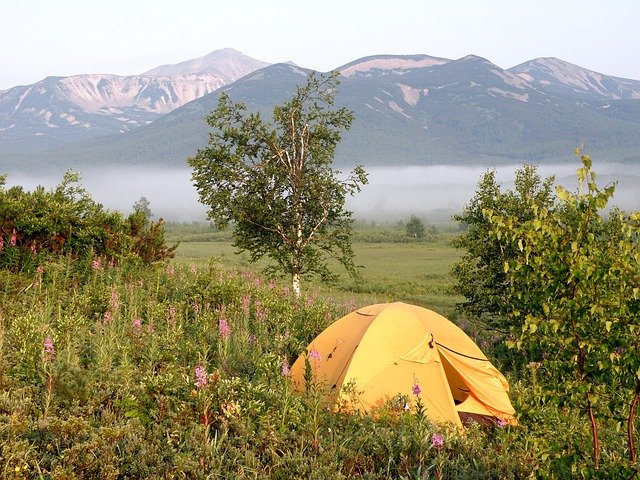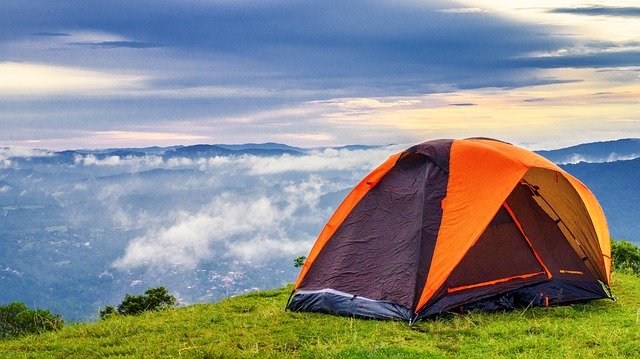Table of Contents
Some links on posts are affiliate links and will earn us a commission from qualifying purchases
I’ll be the first to admit that I don’t do camping, but if you are going on a multi-day hike then camping each night will certainly keep the costs down. But obviously this means your tent will get some amount of dirt build up each day. So you will need to clean your tent after a multi-day hike to ensure that it is fit for purpose next time you want to use it.
As well as the obvious problems caused by rain and mud, you may find that birds decide to use your tent for target practice, or you may find spills from tea, coffee or food. And if it has been raining, you may well find when you get home that your tent smells musty or has spots of mould.
Learning how to clean your tent after each trip will help keep it lasting longer and in good condition.
What You’ll Need To Clean Your Tent
Essential items to clean your tent
- Bath, or very large bucket
- Fragrance-free soap
- Outdoor cleaning soap such as Nikwax
- Sponge or hard-wearing cloth
- Lukewarm water
Optional items for cleaning your tent
- Toothbrush
- Mineral oil
- Enzyme cleaner
Tips for cleaning your tent
Always clean your tent after every trip. This may sound like a lot of work, and that a quick shake before storing away will do, but by cleaning every time will prevent build up of dirt and debris that gets caught in seams and crevices.
Before cleaning, do make sure that you take the tent outside and give it a thorough shake to remove as much dirt as possible. You’ll be surprised how many bits of leaves and small clumps of mud that manage to gather in the corners.
Start off by spot cleaning any areas with soap that are very dirty. Never stick your tent in the washing machine as it may easily tear – ideally you’ll clean in a bathtub in lukewarm (or cold, but not hot) water. It’s a good time to check the seams for any splits.
Do a basic clean after each trip, but make sure you do a deep clean once a year to ensure your tent is in tip-top condition and fit for the job of protecting you. Make sure you check the manufacturers instructions too and protect your investment.

Basic Cleaning for tents
Shake out any debris, then spread out your tent in your garden. With a bucket of lukewarm water by your side, use some fragrance free soap to tackle the very worst parts. Then take indoors to your bath – try not to drip water everywhere whilst you do this, unless you want to cause an argument!
Fill your bath halfway with lukewarm water, and add outdoor cleaner such as Nikwax (link to buy from Amazon). Unzip your tent and turn it inside out, then submerge in the water. Make sure the whole tent is soaked with water and rub gently all over with a sponge and/or cloth. Make sure you get to all areas and remove any mud or sand that didn’t shake out.
Remove from bathtub and drain away the soapy water, and refill with clean water for rinsing. Thoroughly rinse your tent of soap – you may need to do this stage more than once if the tent is very soapy.
Once clean, hang it to dry, preferably outside on a washing line if it is dry outside. Alternatively erect the tent as if you were using. Try to keep out of direct sunlight if possible, as that will help prolong the life. The sun’s UV rays can cause damage to the outer lining and seams. If you have a covered carport this would be a good place to dry off your tent.
You need to make sure that it is thoroughly dry – you never want to store a tent whilst damp, as this will only cause issues with mildew. It’s better to leave it drying for much longer than you think is necessary – of course, if dark clouds come over then you will probably want to bring it inside and find a suitable drying space.
Deep Cleaning your tent
You may find that your tent is showing signs of mould or mildew – often white or yellow patches which will look powdery. It’s important to wash these off as soon as spotted as it can attack the fabric and stitching, which will make your tent leak.
Using an enzyme cleaner cover the area and gently rub together, using a soft brush if the area becomes stubborn. Wash the soap off and rinse thoroughly.
Make sure your zippers are clean – if you find they have become covered in dirt then use an old toothbrush to scrub them. If not cleaned you’ll find that the zips may slip and you’ll have trouble opening and closing them. Once dry a drop of WD40 will help them run nicely.
If you find tree sap gets onto the outside of the tent then scrub the area with a mineral based oil and soft brush before washing – this should be enough to get it clean.
Conclusion – How to clean a tent after a hiking trip
It’s important to clean your tent after every use to avoid build up of dirt such as mud and leaves, and to avoid mould or mildew forming. By following the steps above your tent should serve you for many years enabling you to go exploring the countryside on your hikes.
Read More
I've got to admit, I've never been a festival goes. I'm not one who wants to camp out in a tent, in a field full of other tents, with thousands of people who I don't know. And whilst I love a variety...
The summer of 2018 was a great summer, with some really hot days. Which is lovely if you are sitting by a pool or on the beach, but what happens if you are out putting in the miles walking and the...


